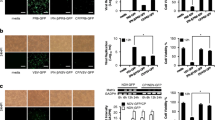Abstract
Ayurvedic medicine utilizes metal-based preparations, known as bhasmas, to treat various health conditions. Yasad bhasma (YB), a zinc-based ayurvedic preparation, shows promise as a potential candidate for developing zinc-based nanomedicines with anti-inflammatory and antioxidant properties. In this study, we synthesized a formulation combining YB and hydroxychloroquine (HC) as a zinc ionophore (YBHC) and investigated its biocompatibility and antiviral effects against buffalo calf coronavirus (BCoV) in Vero cells. Our results demonstrated that the formulation exhibited good conformity and enhanced cell proliferation compared to untreated cells. Additionally, no cytopathic effects were observed in BCoV-infected Vero cells treated with YBHC and YB, while infected control cells exhibited cytopathic effects. YB showed cytoprotection by promoting epithelial tissue turnover. We further explored whether YB/YBHC exerted a lysosomotropic effect to produce antiviral effects on coronavirus-adapted Vero cells, but no cell internalization was observed. In addition to the synergistic antiviral effect of YB and HC, YB may play a vital role in rejuvenating affected tissues.






Similar content being viewed by others
Data Availability
The datasets of M gene generated during the current study is available in the Gen Bank NCBI USA with accession number MW592691.
References
Umrani RD, Paknikar KM (2015) Jasada bhasma, a zinc-based ayurvedic preparation: Contemporary evidence of antidiabetic activity inspires development of a nanomedicine. Evid-Based Complement Altern Med. https://doi.org/10.1155/2015/193156
Sarkar PK, Das MC (2021) Ayurvedic metal nanoparticles could be novel antiviral agents against SARS-CoV-2. Int Nano Lett 6:1–7
Sarkar PK, Chaudhary AK (2010) Ayurvedic bhasma: the most ancient application of nanomedicine. J Sci Ind Res 69:31
Prajapati PK, Sarkar PK, Nayak SV, Joshi RD, Ravishankar B (2006) Safety and toxicity profile of some metallic preparations of ayurveda. Anc Sci Life 25:57
Manuja A, Kumar B, Chhabra D (2022) Chloroquine chaos and COVID-19: smart delivery perspectives through pH sensitive polymers/micelles and ZnO nanoparticles. Arab J Chem 30:104468
Tavakoli A, Ataei-Pirkooh A, Mm Sadeghi G, Bokharaei-Salim F, Sahrapour P, Kiani SJ et al (2018) Polyethylene glycol-coated zinc oxide nanoparticle: an efficient nanoweapon to fight against herpes simplex virus type 1. Nanomedicine 13:2675–2690
Ghaffari H, Tavakoli A, Moradi A, Tabarraei A, Bokharaei-Salim F, Zahmatkeshan M, Farahmand M, Javanmard D, Kiani SJ, Esghaei M, Pirhajati-Mahabadi V (2019) Inhibition of H1N1 influenza virus infection by zinc oxide nanoparticles: another emerging application of nanomedicine. J Biomed Sci 26:1
Barnard DL, Kumaki Y (2011) Recent developments in anti-severe acute respiratory syndrome coronavirus chemotherapy. Future Virol 6:615–631
Manuja A, Kumar B, Chhabra D, Brar B, Thachamvally R, Pal Y, Prasad M (2023) Synergistic effect of zinc-chitosan nanoparticles and hydroxychloroquine to inhibit buffalo coronavirus. Polymers 15:2949
Manuja A, Kumar B, Riyesh T, Talluri TR, Tripathi BN (2020) Microwave assisted fast fabrication of zinc/iron oxides based polymeric nanocomposites and evaluation on equine fibroblasts. Int J Biol Macromol 165:71–81
Neuman BW, Kiss G, Kunding AH, Bhella D, Baksh MF, Connelly S, Droese B, Klaus JP, Makino S, Sawicki SG, Siddell SG (2011) A structural analysis of M protein in coronavirus assembly and morphology. J Struct Biol 174:11–22
Homolak J, Kodvanj I (2020) Widely available lysosome targeting agents should be considered as potential therapy for COVID-19. Int J Antimicrob Agents 56:106044
Al-Bari MA (2020) Co-targeting of lysosome and mitophagy in cancer stem cells with chloroquine analogues and antibiotics. J Cell Mol Med 24:11667–11679
Xue J, Moyer A, Peng B, Wu J, Hannafon BN, Ding WQ (2014) Chloroquine is a zinc ionophore. PLoS ONE 9:e109180
Raguvaran R, Manuja A, Manuja BK (2015) Zinc oxide nanoparticles: opportunities and challenges in veterinary sciences. Immunome Res 11:1
Singh S (2019) Zinc oxide nanoparticles impacts: Cytotoxicity, genotoxicity, developmental toxicity, and neurotoxicity. Toxicol Mech Methods 29:300–311
Soltani L, Mohammadi T (2022) A review of the application of zinc oxide nanoparticles in the biological sciences. Cell Tissue J 13:215–234
Kumar D, Arya V, Kaur R et al (2012) A review of immunomodulators in the indian traditional health care system. J Microbiol Immunol Infect 45:165–184. https://doi.org/10.1016/j.jmii.2011.09.030
Chandran S (2016) A review through therapeutic attributes of yashada bhasma. Int J Pharma Bio Arch 7:6–11
Author information
Authors and Affiliations
Corresponding authors
Additional information
Publisher's Note
Springer Nature remains neutral with regard to jurisdictional claims in published maps and institutional affiliations.
Rights and permissions
Springer Nature or its licensor (e.g. a society or other partner) holds exclusive rights to this article under a publishing agreement with the author(s) or other rightsholder(s); author self-archiving of the accepted manuscript version of this article is solely governed by the terms of such publishing agreement and applicable law.
About this article
Cite this article
Manuja, A., Kumar, B., Chhabra, D. et al. Antiviral and Cytoprotective Effect of Zinc (Yasad Bhasma) Based Nanoformulations Against Bovine Coronavirus. Indian J Microbiol (2024). https://doi.org/10.1007/s12088-024-01255-0
Received:
Accepted:
Published:
DOI: https://doi.org/10.1007/s12088-024-01255-0




